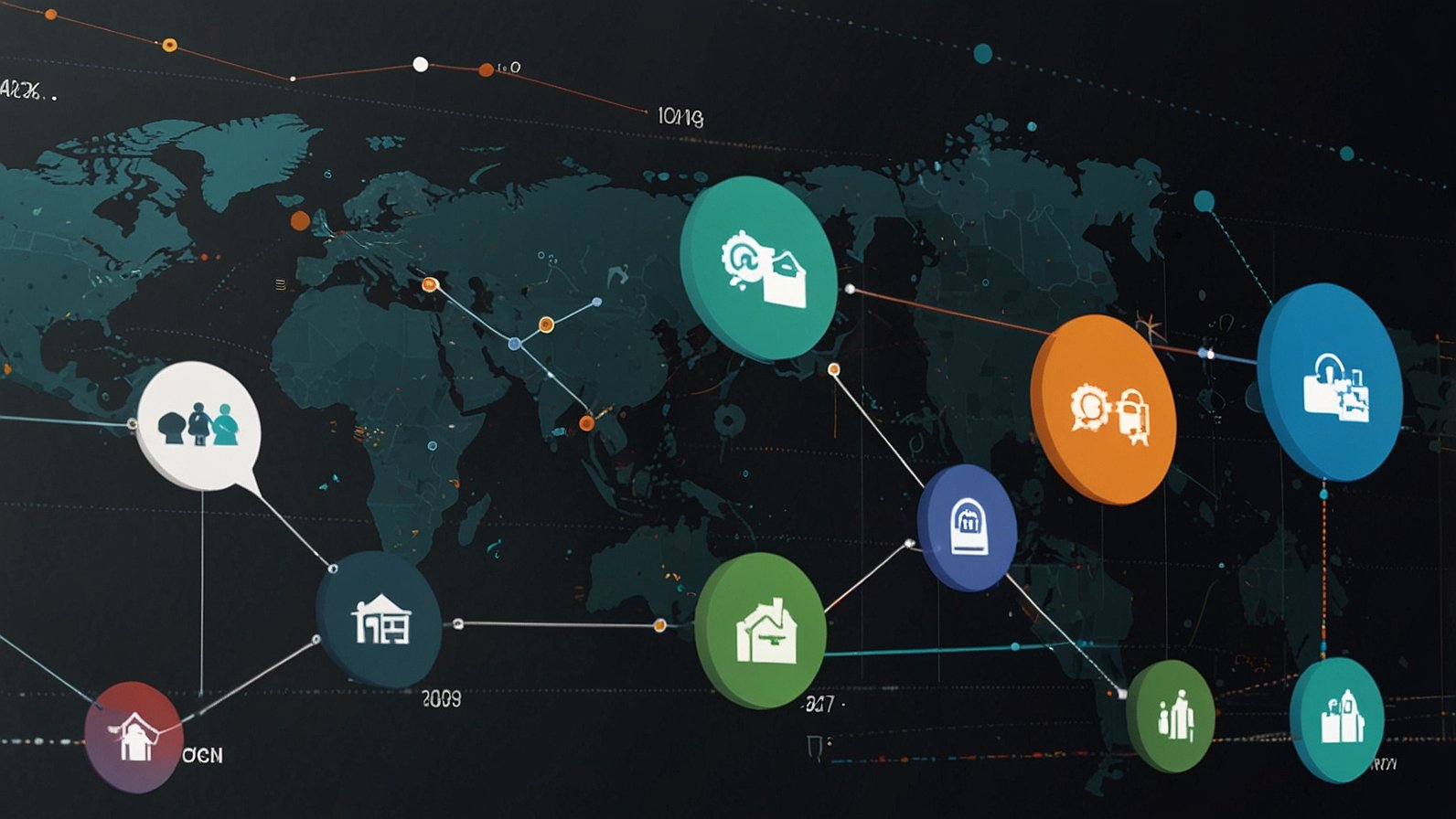Ever ended a long day feeling like you’ve just been a glorified, overly-polite answering machine? You know the drill: answering the same “What’s your pricing?” question for the tenth time, scrambling to find a client’s history before a call, or watching a promising lead go cold simply because your response wasn’t fast enough.
What if you had a secret weapon? A tool that not only automates these conversations but does so with the context and nuance of your best team member? This isn’t about adding a clunky chatbot to your website. This is about fundamentally upgrading how you connect.
Enter Konversky—the up-and-coming AI communications platform designed specifically for startups and customer-facing teams who are tired of the robotic, one-size-fits-all approach. Let’s dive into how it’s changing the game.
The Basics: What Exactly is Konversky?
At its heart, Konversky is an AI-powered communications co-pilot. Think of it less as a robot and more as a super-efficient, always-on junior associate who has memorized your entire company’s playbook, knows every customer’s history, and never sleeps.
Its primary mission is to automate context-aware engagement. Let’s break down what that actually means:
- Automate: It handles repetitive tasks and initial conversations automatically.
- Context-Aware: This is the magic sauce. It doesn’t just give generic replies. It understands who it’s talking to, what they’ve asked before, and what they’re really trying to achieve.
- Engagement: It covers the full spectrum of communication—from sales leads and customer support to onboarding sequences.
Who Is It For?
- Startups: Wearing multiple hats is standard, but you can’t be in five places at once. Konversky acts as your first line of defense, qualifying leads and solving simple problems 24/7.
- Customer Support Teams: Reduce ticket volume by solving common issues instantly, and arming your agents with a full conversation history before they even say “Hello.”
- Sales Teams: Never let a hot lead go cold. Konversky can engage, qualify, and even schedule a demo based on the lead’s specific behavior and questions.
How Konversky Works: The Engine Behind the Conversations
So, how does this thing actually function? It’s not just a simple script. Imagine a three-stage process that works in the blink of an eye.
- The Listening Stage: Konversky connects to your existing tools—like your CRM (e.g., Salesforce, HubSpot), helpdesk, and live chat. It “listens” and pulls in data, building a rich profile of each contact.
- The Understanding Stage: Here, the AI does its heavy lifting. It analyzes the current question against the user’s history, your company’s knowledge base, and the specific context of the conversation. It’s asking itself: “Is this a returning customer?” “Are they looking at the pricing page?” “Did they have a login issue last week?”
- The Engaging Stage: Based on that deep understanding, it delivers a personalized, helpful response. It could be answering a question directly, providing a help article, or intelligently routing the conversation to a human expert with a full briefing.
The table below shows how Konversky’s responses differ from a standard chatbot:
| Scenario | Standard Chatbot Response | Konversky’s Context-Aware Response |
|---|---|---|
| A user asks, “Is feature X available on the Pro plan?” | “Yes, the Pro plan includes many features. You can see our plans here: [Link]” | “Hi [User Name]! Yes, Feature X is included in the Pro plan you’re currently trialing. I’ve enabled it for you. Would you like a quick walkthrough of how it works?” |
| A customer writes, “I’m still having the same issue.” | “I’m sorry to hear that. Can you describe your problem?” | “Hi [Customer Name], I see you were working with Sarah on this ticket (#4561) about API delays. We deployed a fix last night. Can you check if the issue persists and let me know?” |
See the difference? One provides information; the other provides a solution within a relationship.
The Killer Features That Set Konversky Apart
Every tool has a feature list, but Konversky’s are built around a core philosophy of seamless, intelligent support.
- Unified Inbox: Instead of jumping between email, Slack, and your chat widget, everything funnels into one clean dashboard. Your team sees the whole customer journey, not just disconnected fragments.
- Intelligent Triage & Routing: A common misconception is that AI just tries to answer everything itself. Not Konversky. It’s brilliant at knowing when to hand things off. It can detect frustration, complexity, or a sales-ready signal and instantly route the conversation to the right human teammate with all the context they need.
- Personalization at Scale: This is where your words must dance. Konversky can reference past purchases, mention the user’s name, and recall previous support issues. It makes every customer feel like your only customer, even when you’re engaging with hundreds simultaneously.
- Seamless Tool Integration: It’s designed to fit into your existing workflow, not force you to build a new one. It plays nicely with the tools you already use and love.
Why Your Team Needs Context-Aware Automation Now
You might be thinking, “Our current setup works okay.” But the cost of “okay” is often hidden in missed opportunities and team burnout.
Let’s talk real benefits:
- Skyrocket Customer Satisfaction (CSAT): Customers don’t just want fast answers; they want accurate ones. By providing resolutions that are both quick and deeply relevant, you’ll see your satisfaction scores climb. It’s the difference between getting a generic “We care” email and a personalized “We’ve fixed the issue you reported” message.
- Supercharge Your Team’s Productivity: Free your human experts from the repetitive grind. When your support team isn’t answering the same “password reset” question 50 times a day, they can focus on complex, high-value issues that truly require a human touch. Your sales team can spend more time closing deals and less time scheduling meetings.
- Never Drop the Ball on a Lead: Speed is everything in sales. Konversky ensures that every website visitor, regardless of when they drop by, is engaged immediately. It qualifies them, nurtures them, and books them on your calendar, so you convert more leads into customers.
Getting Started with Konversky: A 5-Step Plan
Ready to give it a try? Getting started is straightforward. Here’s a practical plan to roll it out without overwhelming your team.
- Audit Your Common Questions. Look at your support tickets, sales emails, and chat logs. What are the top 10 questions you get every week? “How do I reset my password?” “What’s your pricing?” “Can I have a demo?” This is your starting point.
- Connect Your Tools. Integrate Konversky with your core systems—your CRM, your helpdesk, your calendar. This is how it gains the “context” that makes it so powerful.
- Build and Train Your Knowledge Base. Feed Konversky your documentation, blog posts, and process guides. The more it knows, the smarter it becomes.
- Start with a Pilot Program. Don’t go all-in on day one. Run Konversky for a specific function, like lead qualification or after-hours support, with a small group on your team. Gather their feedback.
- Review, Refine, and Expand. See where it’s excelling and where it needs a little human guidance. Use those insights to refine its responses, then slowly expand its responsibilities.
Wrapping Up: The Future of Communication is Contextual
In a world flooded with digital noise, the companies that stand out will be the ones that make their customers feel heard, understood, and valued instantly. Konversky isn’t just another piece of SaaS software; it’s a strategic partner in building those kinds of rich, responsive customer relationships.
It’s about working smarter, not just harder. By automating the repetitive and arming your team with deep context, you’re not replacing the human touch—you’re amplifying it.
What’s your take? Are you currently using any automation in your customer communications? What’s your biggest challenge?
You May Also Read: Plangud: The Modern Guide to Effortless Planning
FAQs
Is Konversky difficult to set up for a non-technical team?
Not at all! It’s designed for ease of use. The setup primarily involves connecting your existing apps (like Gmail, Slack, or your CRM) through simple, guided integrations. You don’t need to be a developer to get it up and running.
Will Konversky make our customer communications feel robotic?
This is a common fear, but it’s the opposite. Because Konversky is context-aware, its responses are more personalized and relevant than a standard, scripted chatbot. The goal is to make interactions feel more human by eliminating generic, copy-pasted replies.
How does Konversky handle complex or angry customer issues?
Konversky is trained to recognize cues like frustration or complex language. In these cases, it won’t try to solve the problem itself. Instead, it will immediately and smoothly escalate the conversation to a human agent, providing them with the full context so the customer doesn’t have to repeat themselves.
Can we use Konversky across different departments?
Absolutely. While it’s a powerhouse for support and sales, its flexibility allows it to be used for internal HR FAQs, onboarding new employees, or even helping the marketing team qualify inbound leads from web forms.
What happens if Konversky doesn’t know the answer to a question?
It’s programmed to be honest and helpful. It might say something like, “That’s a great question! Let me connect you with a specialist who can give you the most accurate answer.” It then routes the query to the right person and can even learn from that interaction for the future.
Is our customer data safe with Konversky?
Data security is a top priority for any modern AI tool. Konversky typically uses encryption for data both in transit and at rest and complies with major data protection regulations. It’s always best to check their specific security documentation for detailed policies.
Can we customize Konversky’s tone of voice to match our brand?
Yes, this is a key feature. You can train it on your company’s documentation and past communications to adopt your brand’s specific tone—whether it’s friendly and casual or formal and professional.










